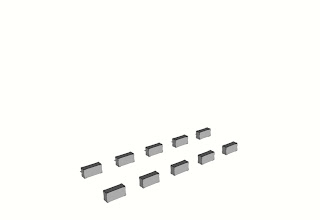Friday, November 30, 2012
Construction Manual
Below is the construction sequence to build the shelter. The governing agency will supervise and instruct the refugees on the construction methods. This will allow the refugee to add on the structure with the proper construction methods at a later time.
Drawings
Floor Plans & Sections
Shelters in Mae La are currently built out of bamboo and timber as the need for space arises. This design aims to organize the space more formaly while allowing for future expansion. This is achieved through completely customizable wall panels.
The first floor contains a common room for cooking and family activities. Between the two rooms is a water pump that takes advantage of reclaimed water.
The second floor contains the living quarters. Each family gets two rooms: A parent’s room and a children’s room. The spaces can be customized to the size desired.
Detailing
Construction Details
The entire shelter is made out of bamboo with the exception of the roof and foundation blocks. Bamboo can be found readily in the area and is much cheaper than sawn timber. The construction will be completed by the owner with the supervision of the governing agency. All joints are constructed with pins and lashing except for the roof which is connected with screws.
Design
CONCEPT
The biggest issue in Mae La is overcrowding. In order to alleviate this problem, the houses must look to build vertically. In theory, if the area of once current house held two families, half of the camp would become usable for farming and other public activities. The vertical shelter will also free space for
circulation both vehicular and pedestrian traffic.
The houses in Mae La are so tightly packed together that one would have trouble even walking around. This problem is made worse by new refugees coming in and building houses in the middle of roads and pathways. By cutting the number of building foot prints in half, the camp becomes much less congested and has room for community buildings and activities. The space would also allow family to maintain small gardens to supplement their food rations.
Subscribe to:
Comments (Atom)
















